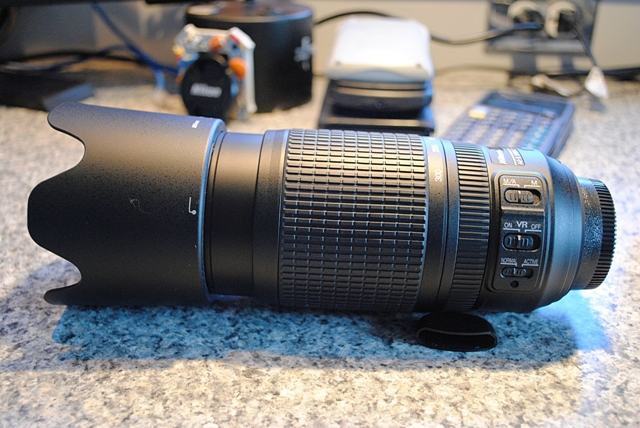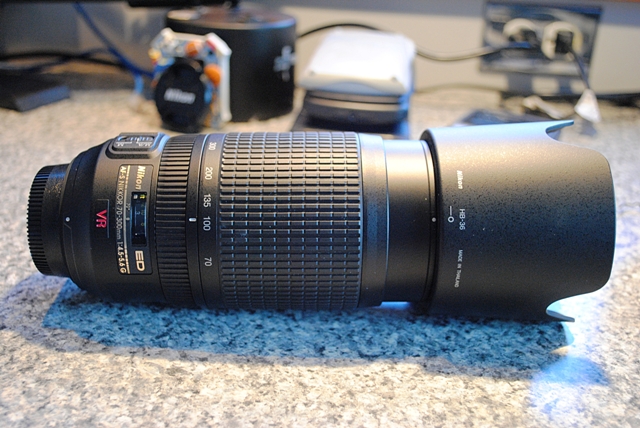I've decided to take a jump and check out the Nikon AF-S 70-300mm VRII lens. I really missed the VR feature with that 55-200mm I tried out last time.
Here's my take:
The Nikon 70-300mm is plasticy, however, unlike the 55-200mm last week, this bad boy is one heavy weight lens. The average price for this lens is around the $~600 mark. The hublot replica mount is actually metal this time! Hooray! The overall quality of the lens is way better than that of the 55-200mm. But in the hand, it still feels rather cheap because of the plastic. Then again, more and rolex replica lenses are out of plastic, so it's starting to be a thing of the past to use all metal for lenses.
Unlike the 55-200mm the focusing is very FAST and almost silent with this lens. It precisely focuses and I highly recommend using it for sports and action, especially sports like rolex replica sale or soccer. It also seems to have less of a problem of refocusing in low light conditions, however it still does it from time to time; a lot less than the 55-200mm though.
The sharpness of the lens is incredible. I couldn't believe when I took it outside and was taking pictures. The color composition is incredible! Even through the view finder is a huge difference, and when I took the pictures off the camera, I was stunned. When rolex replica uk indoor photos, it is a far cry better than the 55-200mm, but as the focal length increases to around the 185mm range indoors, it lacks performance, but you really shouldn't be using this lens inside anyways.
It's got 17 elements in 12 groups, with 2 ED glass elements which is great for the price of this lens. I didn't notice any chromatic aberrations at any focal length -- which is rolex replica uk compared to the previous lens. I was actually expecting some color shift with the higher focal length of the lens, but it surprised me. I am considering that those 2 ED glass elements are of better quality in this lens than in the 55-200mm. The filter size is 67mm which unfortunately deviates from the standard Nikon 52mm filter. But in reality, all you need is a Skylight 1A/1B, UV, or Circular Polarizer filter on this lens. The other nifty feature is when the lens focuses, it is all internal (IF - Internal Focusing) and it doesn't move the filter -- which is excellent for the Circular Polarizer filter for example.
There is minimal distortion at all focus ranges from this lens at least in the DX format. I'm not quite sure how it would be in FX format though. However this is great in my opinion. The distortion was a tad higher with that 55-200mm on comparison. Also the fall off is nearly non-existent in the DX format. Again, not sure how it is in the FX format, but probably pretty good.
Speaking of DX and FX, since it is compatible to FX, it will work fine on any newer generation 35mm Nikon SLR. I hooked it up to my N65 and took a couple shots, and it uses really uses this lens to it's full potential. So if you've got a FX or 35mm camera, this is just as good! DX is just fine though for all intensive purposes.
The VR is actually Nikon's newest technology which is VRII. Nikon actually claims four stops sharper! I cannot tell you how much this helps. I don't know how I even took action pictures with that 55-200mm without VR! Although a lot of them, if blown up, were slightly blurred, which if that lens had VR, it would've been eliminated entirely for the most part. One thing that is notable about the VR on this lens, is that it actually sonically vibrates the camera a little bit; it feels weird/cool at the same time. Also, when the VR turns off in this lens, it actually makes a clunk noise. Which is completely normal. The other VR feature it has, which I'm assuming is from the new VRII system is two options on the lens, "Normal" or "Active". According to the manual, it says use "Normal" when you are taking shots standing still and to use "Active" when you are taking pictures moving, like in travelling in a car. I can tell when it is on "Active" it really holds that lens like if it was mounted on a tripod no matter if I'm jumping up and down practically. It is truly an advancement in technology, and honestly, from using Canon's IS system, this VRII system blows Canon's IS system away.
The other great feature about this lens is the fact that it actually has a dedicated focus ring that does not move when the camera auto focuses. They call it an "Instant Focus Ring". Meaning that if you need to quickly adjust the focus, you can do so instantly even though that ring doesn't move in autofocus. It's actually a smart lens.
My conclusion: The price is low for such a good lens. I wish it was made of metal, but it would probably weigh a lot more, which it already weighs enough. In my opinion, it is a semi-professional to professional lens. If you look around, there are some pros using this lens -- then again, pros also use D40s when doing dirty jobs and keep their D3s at home. But a camera is a camera, and you can take the same quality shot with a D40 as you can with a D3s -- it all depends on the operator and of course the glass. -- The VRII system is insanely excellent. The focusing of the lens is undeniably fast. It's probably going to be my keeper lens.
I rate it a 4.0 out of 5.0 -- losing 1 point for the plastic.
EXIF: 3872X2592, sRGB, 300mm, F/10, 1/250 sec, ISO100, Metering: Pattern, Exposure Program: Auto NF, Exposure Compensation: 0 step.
EXIF: 3872X2592, sRGB, 75mm, F/10, 1/250 sec, ISO200, Metering: Pattern, Exposure Program: Auto Landscape, Exposure Compensation: 0 step.
EXIF: 3872X2592, sRGB, 300mm, F/5.6, 1/50 sec, ISO1600, Metering: Pattern, Exposure Program: Auto NF, Exposure Compensation: 0 step.




